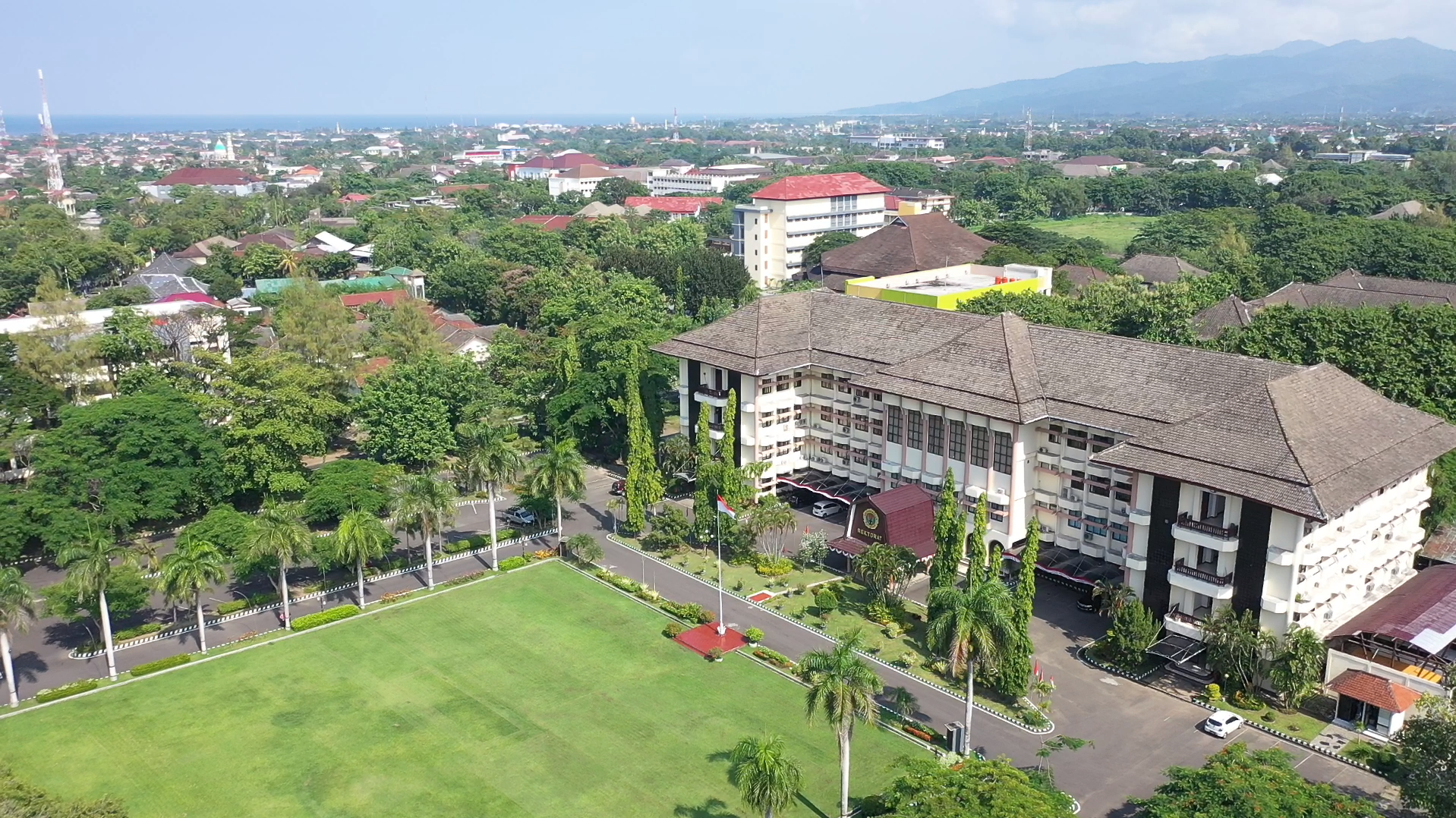Unram Exceeds Net Zero CO2 Emissions Target: Successfully Increase Carbon Sequestration with Strategies to Use Renewable Energy, Green Space, and Revegetation

Mataram, Universitas Mataram – Universitas Mataram (Unram) has reached a new milestone in its efforts to tackle carbon emissions. Based on measurements that began in 2013, Unram has succeeded in exceeding the target of net zero CO2eq emissions.
The green open space (RTH) on the Unram campus, with an area of 17.58 hectares out of a total area of around 40 hectares, has become one of the main supports in this achievement. The identification results show the presence of 99 types of vegetation with a total of 3,726 individual trees. When viewed from the calculation per unit hectare, Unram has an average of 93 trees per hectare and 2 types of vegetation per hectare.
There are also examples of plants such as trembesi trees (Samanea saman) and banyan (Ficus benjamina) which have the ability to absorb large amounts of CO2eq up to thousands of kg per year, which supports the absorption of CO2eq on the Unram campus.
Unram has a biomass value of 335.9 tons per hectare per year and a carbon storage value of 154.5 tons per hectare per year. Unram’s carbon dioxide equivalent (CO2eq) absorption reaches 6.2 tons per day or equivalent to 2,245.2 tons per year. This amount is equivalent to 567 tons of CO2eq per hectare per year from 99 types of trees. Oxygen production produced by the campus reached 1,639 tons per year or equal to 4.5 tons per day from 3,726 individual trees.
In addition, carbon stocks in the Senaru Special Purpose Forest Area (KHDTK) have also been successfully increased. Currently, Senaru KHDTK carbon reserves reach 126.41 tons of carbon per hectare, with details of aboveground carbon reserves of 83.71 tons of carbon per hectare and soil carbon of 42.7 tons of carbon per hectare.
The total CO2eq absorption capacity in KHDTK Senaru is 208,858.90 CO2eq tons per year; 9,697.86 CO2eq tons per year in RTH Unram; 7,980.34 CO2eq tons per year in Mangrove Station Unram; and 9,967.86 CO2eq tons per year in the Unram environment. So that the total absorption of CO2eq emissions in Unram is 226,807.1 CO2eq tons per year.
Meanwhile, carbon emissions in the Unram environment include emissions from vehicles of the Unram academic community of 14,080 CO2eq tons per year; emissions from electricity 3,223 CO2eq tons per year; emissions from footprint 107.16 CO2eq tons per year; and emissions from waste 53.57 CO2eq tons per year. So that the total carbon emissions in Unram amounted to 17,463.73 CO2eq tons per year.
With Unram’s CO2eq emission absorption surplus of 209,343.37 CO2eq tons per year from the difference between absorption capacity and CO2eq emissions, Unram has exceeded the net zero emission target.
Head of the Unram Forestry Study Program (Kaprodi), Hairil Anwar explained that this data was the result of research conducted by Unram students and lecturers. This research is in accordance with the GHG (Greenhouse Gas) Protocol Corporate.
“Unram certainly has a target to continue to reduce equivalent carbon dioxide emissions. We will try to achieve this target at least in 2050. We do this by implementing New and Renewable Energy (EBT) such as the use of solar cells that produce electricity of 25,550 kWh / year, adding vegetation composition such as bamboo along the river that crosses Unram and planting 1,000 mangosteen trees to continue to increase carbon reserves at Unram, and continuing efforts to reduce CO2 emissions from various other activities, “he added.
Unram’s success in achieving surplus CO2eq emission absorption shows a strong commitment to protecting the environment and making a positive contribution to addressing global climate change. Unram is also committed to continuing proactive efforts to strengthen environmental sustainability, including through research, education, and implementation of environmentally friendly policies.
